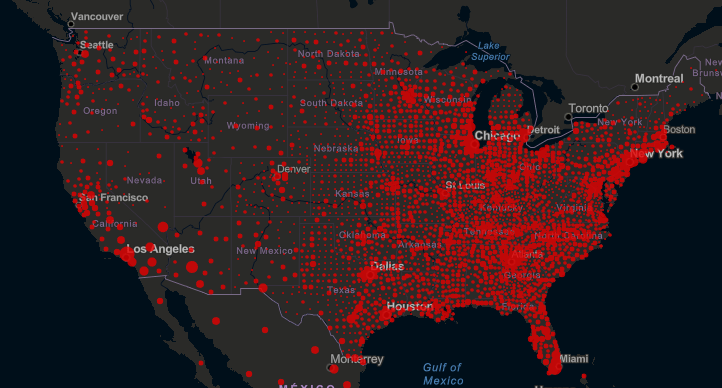December 16th, United States began to distribute vaccines and carried out far-reaching actions to control the epidemic. The number of deaths due to COVID-19 has exceeded 300,000.
The death toll is comparable to that of St. Louis or Pittsburgh; the tragedy of Hurricane Katrina has been repeated every day for five and a half months; more than five times that of the United States killed in the Vietnam War; and the tragedy of more than 100 days is equivalent to a daily “9” ·11″ The death toll in the attack.
The important operation comes days after Dr. Anthony Fauci, the government’s top infectious disease expert, said: “The figures are amazing, the most affected respiratory plague we have experienced in 102 years since the deadly Spanish flu of 1918.”
Experts say vaccines and other measures may not be until long after the beginning of spring to control the number of cases and deaths in the United States. Cold weather forces people to stay indoors, and the virus is more likely to spread indoors. Many Americans disdain to wear masks or take other precautions. Some public health authorities predict that another 100,000 people may die from the novel coronavirus by the end of January next year.
According to the Associated Press, Washington on December 14, the United States began the largest vaccination campaign in history on the 14th, and medical staff rolled up their sleeves to vaccinate them to protect them from the novel coronavirus. Despite the national death toll approaching 300,000, it is still an optimistic day.
The report said that as the countdown counts “3, 2, 1”, the staff of the Wexner Medical Center at Ohio State University applauded the first vaccination.
In New Orleans, Steven Lee, a pharmacist in the Department of Intensive Care at Oxner Medical Center, concluded while vaccinated: “We can finally prevent disease, not cure it.”
From Rhode Island to Texas, hospitals across the country are reportedly unloading precious frozen vaccine vials produced by Pfizer Pharmaceutical Co., Ltd. and German partner Biotech Company. The staggered delivery of the vaccine will last all day until the 15th. For the first vaccinated medical workers and nursing home residents, their hopes were restrained by grief and months of exhaustion of the epidemic. COVID-19 cases are still rising sharply in the United States and around the world.
Dr. Chris Dale of a Seattle health service said: “This is 24 miles (about 38 kilometers, 42 kilometers) of the marathon, people are exhausted. However, we also realize that the end is just around the corner.”
According to the report, in order to maintain extremely low freezing temperatures, the first batch of nearly 3 million vaccines were shipped in dry ice, which was only the first delivery of the required quantity. Vaccines produced by Pfizer Pharmaceuticals and Biotech companies arrive every week.
The report pointed out that although the United States hopes to have enough vaccines by the end of this month to vaccinated 20 million people, ordinary people will wait until next spring to get the vaccine.
The report said that the difficulty now is to quickly inject the vaccine into the arms of millions, not just doctors and nurses, but also other high-risk personnel, such as security guards and food processors, and then deliver the second batch of vaccines three weeks later.
“We’re still in a surge and it’s a holiday, and our medical staff are working at an extraordinary pace,” said Hugh Marshney, director of pharmacy at Mount Sinai Medical System in New York City. In addition, when a vaccine accelerates the body’s immune system, it can cause temporary fever, fatigue and pain, forcing hospitals to stagger hours to vaccinate employees.
The report concluded that the cautious public will pay close attention to see whether medical personnel are willing to vaccinate. According to a recent poll, only half of Americans say they are willing to get vaccinated, while about a quarter of Americans say they don’t want to be vaccinated, while the rest say they are not sure.



